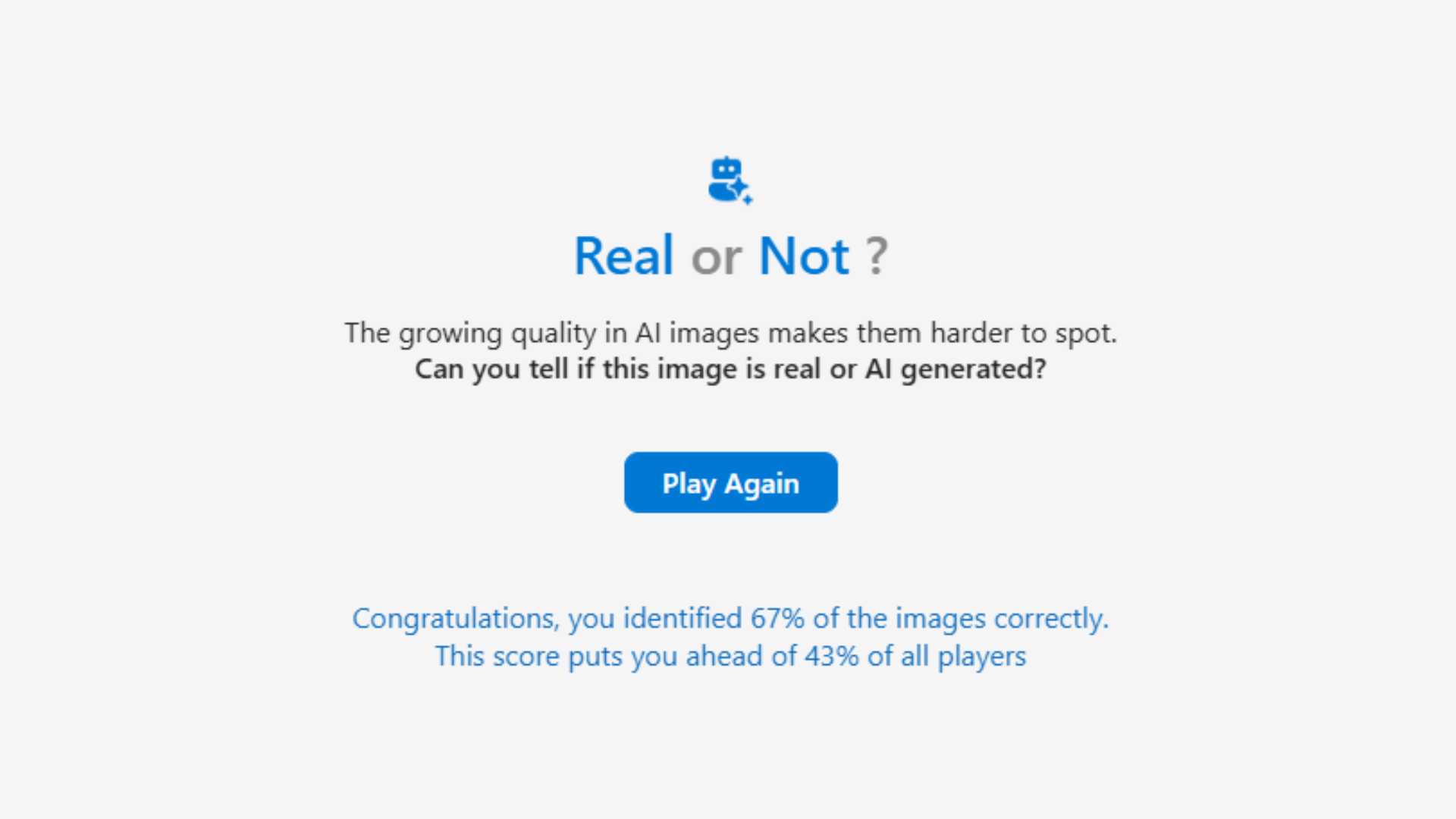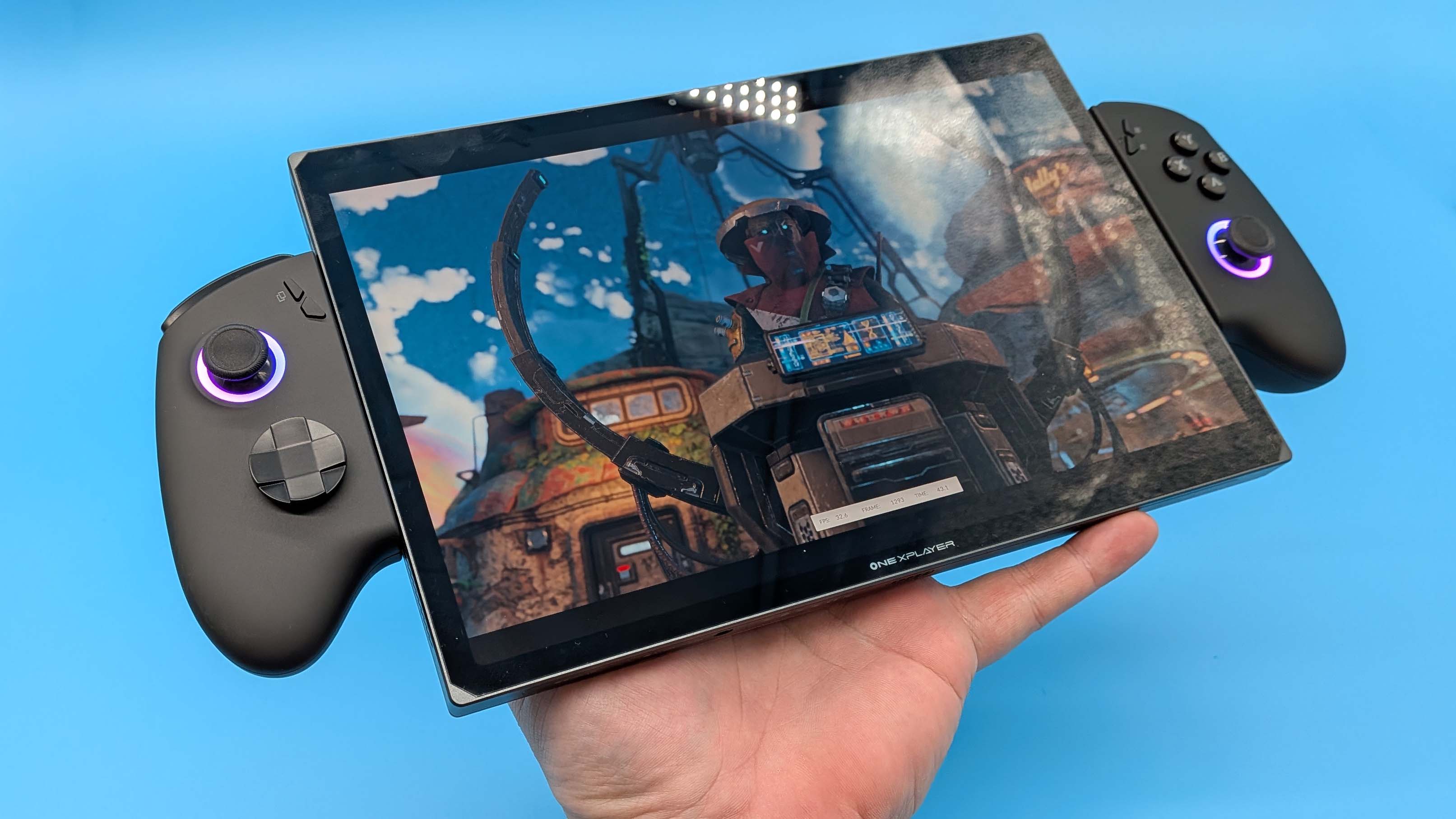Microsoft study suggests folks can't spot the difference between real and AI-generated images, only correctly telling them apart 62% of the time—can you do any better?
It's too early in the week for my sense of reality to be challenged like this.

31 July, 2025: An earlier version of this article featured the headline 'Microsoft study suggests folks can't tell the difference between real and AI-generated images about 62% of the time—but can you do any better?' This could be read to imply that participants in Microsoft's study were falsely identifying AI-generated images 62% of the time, when they were in fact correctly discerning between these diffusion-based images and real photographs 62% of the time. The headline and strap have both been adjusted to more clearly reflect this fact.
The original story from July 30 follows below.
Unless you take curation of your social feeds very seriously, the tidal wave of AI slop images and videos has felt nigh inescapable. More worrying still is how often this crashing tide serves to highlight which of our loved ones struggle to discern AI-generated content from all the slop made by human hands. Even worse still, one can often find oneself fooled by an image spat out by a generative model.
Sound familiar? Turns out it's not just you. According to a new study out of Microsoft's AI for Good research lab, folks can accurately discern between real and AI-generated images only 62% of the time. I suppose that's better than simply flipping a coin, but that's still pretty bleak.
This figure is based on "287,000 image evaluations" from 12,500 participants tasked with labelling a selection of images. Participants assessed approximately 22 pictures each, selected from a sizeable bank that included both a "collection of 350 copyright free ‘real’ images" plus "700 diffusion-based images using DallE-3, Stable diffusion-3, Stable diffusion XL, Stable diffusion XL inpaintings, Amazon Titan v1 and Midjourney v6." If you fancy a humbling experience, you can give the same 'real or not real' quiz a go yourself.
The Microsoft research lab then exposed their own in-development AI detector to the same bank of images, sharing that this tool was able to accurately identify artificially generated images at least 95% of the time.
I understand that Microsoft is a massive, many-limbed company with interests all over the place, but it does feel weird for their research lab to highlight a problem that other parts of the company has arguably fuelled—let alone for some part of Microsoft to be acting like, 'but don't worry, we'll soon have a tool for that.'

To their credit, the research team does also call for "more transparency when it comes to generative AI," arguing that additional measures like "content credentials and watermarks are necessary to inform the public about the nature of the media they consume."
However, it's easy enough to crop around a watermark, and I've no doubt those sufficiently motivated to do so will find a way around the similarly proposed measures of digital signatures and content credentials.
Keep up to date with the most important stories and the best deals, as picked by the PC Gamer team.
A multi-pronged approach to AI-detection definitely doesn't hurt—especially as it's clear we need to graduate beyond simply looking at a suspicious post and going 'it's giving AI vibes.' But while we're developing such an AI-detection tool kit, maybe we can also address AI's bottomless appetite for power, as well as its resulting greenhouse gas emissions and impact on local communities. Just a thought!

1. Best overall:
HP Omen 35L
2. Best budget:
Lenovo Legion Tower 5i
3. Best compact:
Velocity Micro Raptor ES40
4. Alienware:
Alienware Aurora
5. Best mini PC:
Minisforum AtomMan G7 PT

Jess has been writing about games for over ten years, spending the last seven working on print publications PLAY and Official PlayStation Magazine. When she’s not writing about all things hardware here, she’s getting cosy with a horror classic, ranting about a cult hit to a captive audience, or tinkering with some tabletop nonsense.
You must confirm your public display name before commenting
Please logout and then login again, you will then be prompted to enter your display name.

